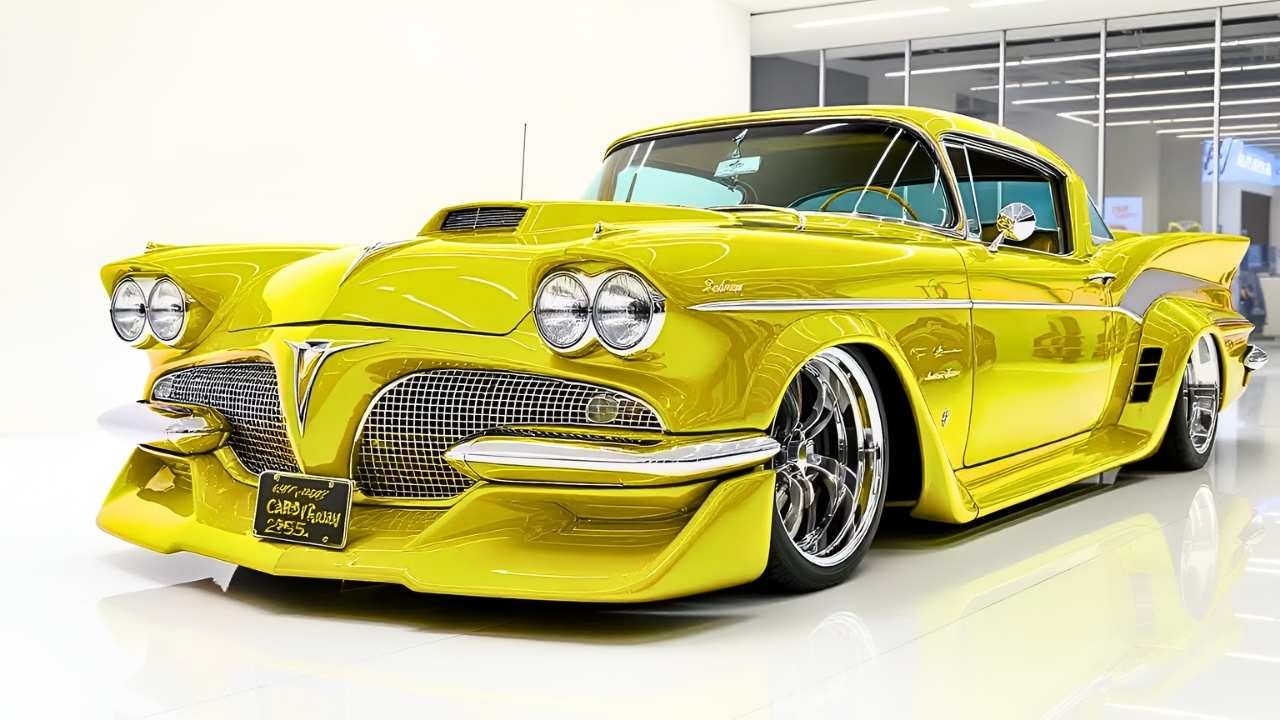The 1959 Pontiac made headlines for introducing a feature that would leave a lasting mark on the automotive industry. During a time when car manufacturers were experimenting with style, performance, and innovation, Pontiac decided to push boundaries with a unique design element that captivated the public and industry insiders alike. This vehicle not only showcased Pontiac’s ambition but also highlighted how innovation could influence automotive trends for years to come. In this review, we will explore the 1959 Pontiac’s debut, its revolutionary feature, design, performance, and the legacy it left behind.
Historical Context
In the late 1950s, the American auto industry was in a period of rapid innovation. Manufacturers were competing to offer cars that combined style, power, and advanced features. The post-war economic boom allowed consumers to demand more luxurious and visually striking vehicles. Pontiac, a division of General Motors, had already earned a reputation for producing reliable and stylish cars, but the 1959 model would take their vision one step further. The debut of this Pontiac coincided with an era where automobile styling was a key factor in buyer decisions, making its feature all the more impactful.
The Revolutionary Feature
What made the 1959 Pontiac stand out was its tailfin design. While tailfins were not entirely new in 1959, Pontiac’s approach was bolder, wider, and more dramatic than competitors. The fins extended smoothly from the rear fenders and were paired with stacked dual taillights that emphasized a sense of motion even when the car was stationary. This design choice shocked the auto industry because it combined elegance with an aggressive, futuristic look that few expected from a mid-range brand like Pontiac. Automotive critics and enthusiasts alike praised the styling for its daring yet balanced proportions, and it quickly became a defining characteristic of the model year.
Exterior Design
Beyond the tailfins, the 1959 Pontiac showcased other distinctive design elements. The front grille was broad and chrome-accented, giving the car a commanding road presence. Sleek side panels with minimal ornamentation allowed the tailfins to stand out without visual clutter. The car’s roofline flowed gracefully toward the rear, creating a sense of speed and sophistication. The use of two-tone paint schemes highlighted the car’s curves and edges, adding to its striking appearance. Overall, the exterior design demonstrated Pontiac’s commitment to blending innovation with consumer appeal.
Interior and Comfort
The interior of the 1959 Pontiac reflected the era’s focus on comfort and convenience. The cabin was spacious, allowing passengers to enjoy long drives without feeling cramped. Bench seats in the front and rear were upholstered with durable, stylish materials that matched the car’s exterior sophistication. The dashboard featured a symmetrical layout with easy-to-read gauges and a functional radio system, which was considered a modern convenience at the time. Attention to detail extended to trim pieces and door panels, all of which contributed to a premium feel despite the car being more affordable than luxury models. The interior design reinforced Pontiac’s philosophy of providing value while maintaining style.
Performance and Handling
Under the hood, the 1959 Pontiac offered a range of engine options, including a V8 that delivered impressive power for the period. The car’s suspension was tuned for a comfortable ride, absorbing bumps while maintaining stability on the road. Steering was responsive, allowing for confident handling despite the vehicle’s size. Fuel efficiency was reasonable for a V8-powered car of the era, and Pontiac focused on ensuring reliability and durability. Overall, the 1959 model provided a driving experience that balanced performance with everyday usability, making it popular among a wide range of consumers.
Market Reception and Impact
When the 1959 Pontiac debuted, it quickly captured attention for its daring design. Car buyers appreciated the innovative tailfin and overall styling, while automotive publications praised Pontiac for pushing the envelope in terms of aesthetics and engineering. The model influenced other manufacturers to experiment with more dramatic design elements, contributing to the tailfin trend that defined late 1950s and early 1960s cars. Its commercial success reinforced the idea that combining style, performance, and affordability could create a vehicle that resonated with both consumers and critics.
Legacy of the 1959 Pontiac
The 1959 Pontiac’s revolutionary feature helped solidify the brand’s reputation for innovation and style. Collectors today value the model for its distinctive design and historical significance. The tailfin and stacked taillight configuration became a symbol of an era when automotive design was bold, expressive, and full of personality. The car’s influence extended beyond aesthetics, inspiring future generations of Pontiac vehicles to embrace creativity and consumer appeal. As a result, the 1959 Pontiac is remembered not just as a car, but as a milestone in automotive history.
Conclusion
The 1959 Pontiac is a remarkable example of how a single innovative feature can leave a lasting impact on the auto industry. Its bold tailfins, striking design, and balanced performance captured the imagination of car enthusiasts and influenced design trends for years. The model exemplified Pontiac’s ability to combine affordability, style, and innovation, creating a car that was both visually stunning and enjoyable to drive. For automotive historians and collectors, the 1959 Pontiac remains a symbol of creativity and forward-thinking design during one of the most exciting eras in car manufacturing history.
Disclaimer
This article is based on historical records, expert reviews, and publicly available information about the 1959 Pontiac. Actual features, performance, and market reception may vary based on sources and regional variations.



